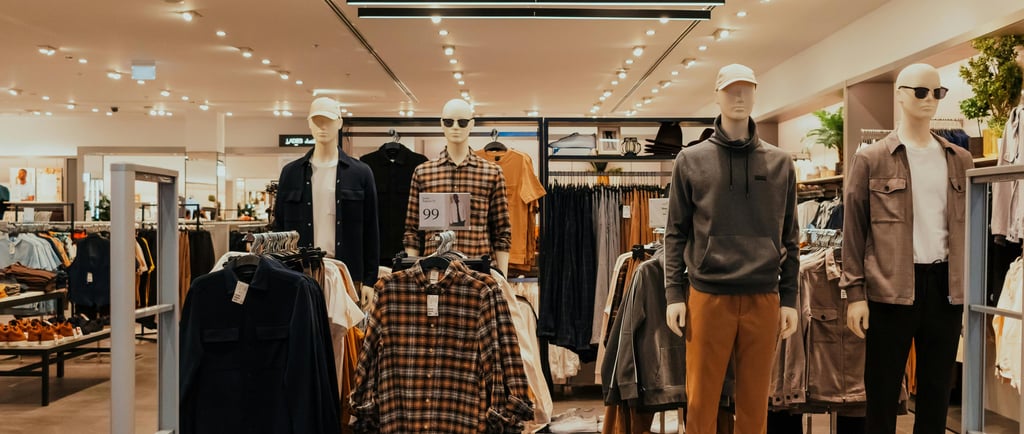Southeast Asia's Millennials and Their Loungewear Preferences: A Growing Market Trend
In Southeast Asia, millennials—particularly those born in the 1990s—are leading a shift in the loungewear market, choosing comfort and style over traditional norms. Let's explore how this consumer demographic is driving the growth of the loungewear industry.
11/28/20243 min read


As lifestyles evolve, so do fashion choices. Loungewear, once considered a basic home necessity, is now becoming a major fashion category, especially among the younger generation. In Southeast Asia, millennials—particularly those born in the 1990s—are leading a shift in the loungewear market, choosing comfort and style over traditional norms. Let's explore how this consumer demographic is driving the growth of the loungewear industry.
The Rise of Loungewear Among Southeast Asia's Millennials
The concept of loungewear has gained immense popularity over the past few years, especially during and after the COVID-19 pandemic, when remote work and staying at home became the norm. In Southeast Asia, millennials are increasingly turning towards comfortable and trendy loungewear that allows them to feel good while working from home or relaxing. This shift is not only driven by the need for comfort but also by a desire to express personal style, even in casual settings.
Key Insights Into Loungewear Preferences
Recent market research has highlighted the following key insights into the loungewear preferences of Southeast Asia's 90s-born consumers:
Comfort is King
According to a report by Euromonitor International (2023), 78% of millennials in Southeast Asia consider comfort as the top priority when purchasing loungewear. The younger generation is increasingly moving away from tight and restrictive clothing, preferring loose, soft, and breathable fabrics that allow for all-day comfort. This preference is evident in the rise of brands offering cotton and modal-based loungewear that is both comfortable and stylish.Increased Focus on Style
Millennials no longer view loungewear as simply a practical necessity—they see it as an extension of their personal style. A survey conducted by Statista (2023) showed that 62% of millennials in Indonesia, Malaysia, and Thailand said they would spend more on loungewear that features trendy designs and attractive colors. This interest in style has led to a surge in demand for aesthetically appealing loungewear sets that can be worn both indoors and during casual outings.Value for Money
The economic impact of the pandemic has made Southeast Asia’s younger population more value-conscious. According to NielsenIQ (2023), 55% of millennials across Vietnam, the Philippines, and Singapore are looking for affordable options that still provide good quality. Consumers are now opting for versatile loungewear pieces that offer the best value, balancing both price and comfort without compromising on style.Sustainability Matters
Millennials are also more likely to be conscious of sustainability in their purchasing decisions. A study by McKinsey & Company (2023) found that 40% of millennials in Southeast Asia prefer loungewear made from eco-friendly materials or brands that are committed to sustainable practices. This trend is pushing brands to adapt, offering products that use recycled fabrics or reduce their environmental footprint.Online Shopping Dominates
The buying habits of Southeast Asian millennials reflect the region's fast-growing e-commerce industry. According to Google and Temasek’s e-Conomy SEA Report (2023), online searches for loungewear increased by 35% year-on-year, with millennials being the key demographic driving this trend. The convenience of browsing and buying from home, coupled with access to a wide variety of options, has made online shopping the preferred choice for many young consumers.
Country-Specific Trends
Indonesia: Indonesian millennials are particularly fond of loungewear that combines traditional designs with modern comfort. Batik-inspired prints on loungewear sets are gaining popularity, allowing consumers to feel connected to their heritage even when relaxing at home.
Thailand: In Thailand, there is an increased focus on vibrant and fashionable loungewear that reflects the energetic culture of the country. Thai millennials are willing to invest more in high-quality loungewear that can double as casual wear for errands or social gatherings.
Malaysia: Malaysian millennials favor lightweight, breathable fabrics due to the tropical climate. Loungewear brands that prioritize comfort while maintaining an element of luxury are performing well in this market.
Implications for Brands
Brands targeting millennials in Southeast Asia must understand that this generation is not only looking for comfort but also style, sustainability, and value for money. As such, incorporating trendy designs, sustainable fabrics, and an attractive price point will be crucial to winning over this consumer group. Engaging with millennials through social media and providing an easy online shopping experience are also important aspects for brands to consider.
Conclusion
The loungewear market in Southeast Asia is booming, thanks in large part to the preferences of millennials born in the 1990s. Comfort, style, affordability, and sustainability are driving purchasing decisions, making it essential for brands to adapt their offerings accordingly. As home and work-life boundaries continue to blur, the demand for stylish and comfortable loungewear is expected to grow, positioning it as an important segment in the region's fashion industry.
For brands looking to tap into this trend, focusing on these evolving consumer needs and preferences will be key to capturing the millennial market in Southeast Asia.
Sources:
Euromonitor International, 2023
Statista, 2023
NielsenIQ, 2023
McKinsey & Company, 2023
Google and Temasek's e-Conomy SEA Report, 2023
Connecting China & Southeast Asia for Business Success
Bridging brands and opportunities across borders. We empower businesses to expand, connect, and thrive through our comprehensive services and industry expertise.
© 2024. All rights reserved.
Connect with us for the latest news on business opportunities and exhibition partnerships.


